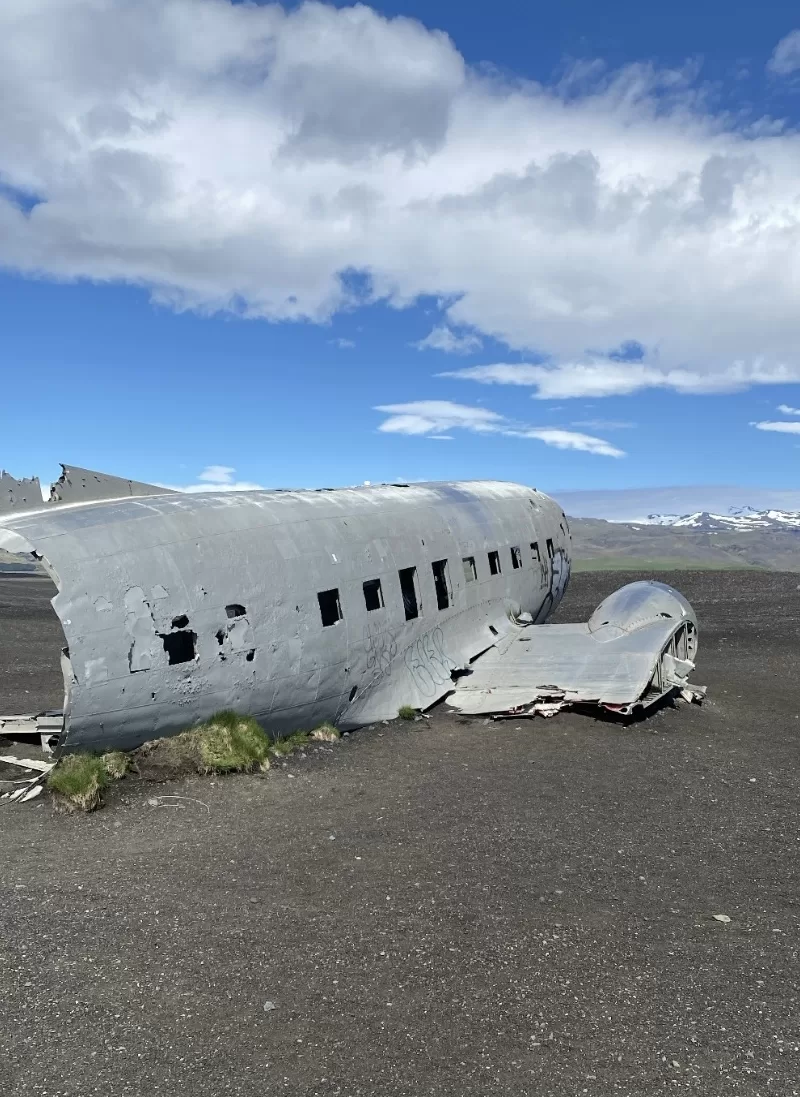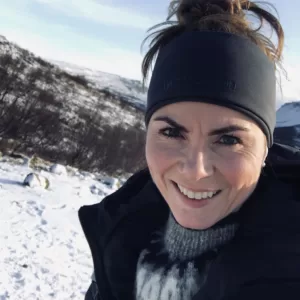Dyrhólaey offers some stunning views on a clear day. I had actually forgotten how beautiful it is over there until I revisited earlier this summer. Love when that happens. When places are even more beautiful than I expected or remember.


But you don’t only get to experience some amazing views in Dyrhólaey. The birdlife there is also very diverse where the puffins are without a doubt the most popular ones among the visitors.
Dyrhólaey is located on the Icelandic South Coast, between Skógafoss Waterfall and Reynisfjara Black Sand Beach. It’s about 28km/17mi drive from Skógafoss and 20km/12mi drive from Reynisfjara Black Sand Beach.
Two major Viewing Points at Dyrhólaey
There are two major viewing points at Dyrhólaey. There is a hiking trail between these two, but if you’re short on time I’d recommend you use your car. Simply because I don’t really think the walk/hike adds anything to the experience. I might be wrong though as even if I didn’t see anything special on my walk you might spot some puffins or other birds on your way. I didn’t when I was there last time but that doesn’t mean you won’t 🙂
Viewing Point 1
You can see a map of the area here down below. There are two parking lots in Dyrhólaey and I call the one that is to the right on the map, viewing point 1.


From here you can see the mighty Arnardrangur, a sea stack that stands on the black sand beach below the cliffs. If the weather conditions allow, you can also see Reynisdrangar in the distance, the famous sea stacks on Reynisfjara Black Sand Beach.
Here you will also find some restrooms which may come in handy. Please note there are no restrooms at the other parking lot.
Viewing Point 2
By the parking lot to the left on the map you’ll find what I call viewing point 2. For some reason the road to it is shown as a jeep or 4×4 vehicle only on the map. I don’t really understand why, as I saw all kinds of cars driving up there. Maybe the road has been fixed since this map was made, I don’t know. At least people didn’t seem to have any trouble getting there. I also checked if this road has winter service and found out it does. So I really don’t know why it’s labeled like this on the map,
Of course its condition can vary during winter, just like any other road’s. You can see the condition of this road here:
Road conditions in South Iceland.

Anyways. From here you can see the light house that stands on Dyrhólaey’s highest point. Behind the light house you have a view over the big stone arch from which Dyrhólaey gets its name from and on to the right of the parking lot you have a view over an endless black beach. Or at least so it seems. You may have seen a picture of this beach from this exact angle as there are tons of pictures of it floating around the internet.
I honestly don’t know which viewing point I would choose if I had to choose only one of them. I definitely would check them both out if I were you as they are quite different.
Hiking Trail from Viewing Point 1 to Viewing Point 2 in Dyrhólaey
As I mentioned before, I didn’t drive from parking 1 to parking 2. I hiked the trail along the shore line (which you can also see on the map). The trail is about 1.3km/0.8mi one way with an elevation of about 100m/328ft.
It was a nice walk but as I said, I didn’t think it added anything as such to my visit. It would have, if I had seen some puffins for example but I didn’t. At least not this time around. So I personally recommend just driving between the viewing points and use your precious time on a different, more rewarding hikes.
Puffins in Dyrhólaey and other Places in Iceland
Dyrhólaey plays a very important role for birdlife on the south coast of Iceland. Its importance lies in the plentiful coastal cliffs on the otherwise sandy south coast. Seabirds nest in the cliffs and the offshore rocks along the shore. Fulmar is the most common bird in Dyrhólaey but the most popular one, among its visitors, is without a doubt the puffin.
Puffins are seabirds and spend most of their lives out in the middle of the North Atlantic Ocean. However, during their breeding season from May to August, they migrate to countries like Iceland, Norway, Greenland, the Faroe Islands, Ireland and Scotland. A large part of the puffin world population nests in Iceland and during summer, you can find colonies of puffins all around Iceland.
Besides Dyrhólaey, you usually find some puffins in summer in the following places:
- Borgarfjörður Eystri (Eastfjords)
- Drangey Island (North Iceland)
- Grímsey Island (North Iceland)
- Ingólfshöfði (South Coast)
- Westman Island (South Coast)
- Látrabjarg (Westfjords)
As the puffins often spend the day out on sea fishing, you might have a better chance of seeing them in the morning or the evening. Please note when visiting Dyrhólaey, that the area is closed between 7pm and 9am for bird conservation. So if you plan to look for puffins very early in the morning or late in the evening you’ll have to do it somewhere else.
Well, that’s it for now. If you liked this post and think some of your friends might be interested in reading it too, please help me spread the word. I’d really appreciate it if you’d share it on social media or just send it directly to a friend.
Until next time!




Leave a Reply